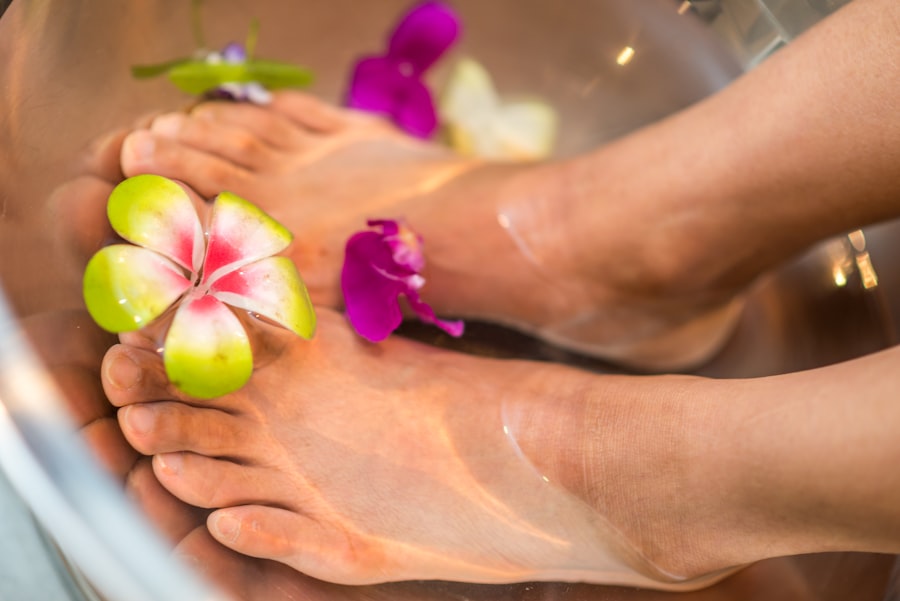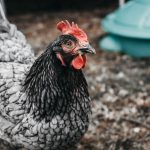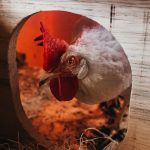Chicken nails, also known as claws, are an integral part of a chicken’s anatomy. Composed of keratin, the same protein found in human nails and hair, these structures are attached to the chicken’s toes. Chicken nails serve multiple purposes, including scratching, digging, and perching.
Their curved and pointed shape enables chickens to grip surfaces and navigate their environment effectively. The structure of chicken nails consists of a hard outer layer and a softer inner core, similar to human nails. The color of these nails can vary depending on the breed, ranging from black to white or yellow.
Understanding chicken nail anatomy is crucial for proper care and maintenance. Chickens rely on their nails for various daily activities, such as foraging for food, perching on roosts, and self-defense against predators. The length and condition of a chicken’s nails significantly impact their mobility and overall functionality.
Chicken owners should be knowledgeable about nail anatomy to provide appropriate care for their flock. Regular inspection and trimming of chicken nails can prevent potential health issues and contribute to the birds’ overall well-being.
Table of Contents
Key Takeaways
- Chicken nails consist of a hard outer layer and a soft inner core, similar to human nails
- Yes, chicken nails do keep growing and need regular maintenance
- Factors such as diet, genetics, and environment can affect the rate of chicken nail growth
- Regularly trimming chicken nails can help manage their growth and prevent potential health issues
- Overgrown chicken nails can lead to discomfort, difficulty walking, and even infection, so it’s important to monitor and trim them regularly
Do Chicken Nails Keep Growing?
Factors Influencing Nail Growth
Younger chickens tend to have faster nail growth compared to older chickens. Certain breeds may also have faster-growing nails than others. Moreover, the growth rate of chicken nails is influenced by the chicken’s overall health and nutrition.
Importance of a Balanced Diet
A balanced diet with adequate levels of protein and essential nutrients is crucial for promoting healthy nail growth in chickens. Chicken owners must be aware of the continuous growth of chicken nails and monitor the length of their flock’s nails regularly to prevent overgrowth.
Regular Nail Trimming is Essential
Overgrown nails can lead to discomfort, mobility issues, and potential health problems for the chickens. Regular nail trimming is necessary to maintain the optimal length and condition of the nails. Understanding the growth patterns of chicken nails is essential for proper nail care and management.
Factors Affecting Chicken Nail Growth

Several factors can influence the growth of chicken nails. Genetics play a significant role in determining the growth rate and length of a chicken’s nails. Certain breeds may have naturally faster-growing nails compared to others.
Age is another factor that affects nail growth, with younger chickens typically experiencing faster nail growth compared to older chickens. Nutrition also plays a crucial role in promoting healthy nail growth in chickens. A balanced diet with adequate levels of protein, vitamins, and minerals is essential for maintaining optimal nail health.
Environmental factors can also impact the growth of chicken nails. Chickens that have access to natural perches and rough surfaces may experience slower nail growth due to natural wear and tear. On the other hand, chickens kept in environments with smooth or soft surfaces may experience faster nail growth.
Additionally, the overall health and well-being of the chickens can influence nail growth. Chickens that are stressed or unwell may experience slower nail growth compared to healthy, well-cared-for chickens. Understanding the various factors that affect chicken nail growth is crucial for providing proper care and maintenance for a flock.
By considering genetics, age, nutrition, environment, and overall health, chicken owners can take proactive measures to promote healthy nail growth in their chickens.
How to Manage Chicken Nail Growth
Managing chicken nail growth is an essential aspect of caring for a flock. Regular inspection and trimming of the nails are necessary to maintain optimal nail health and prevent potential health issues. There are several methods that chicken owners can use to manage nail growth in their flock.
Providing natural perches and rough surfaces for chickens to scratch and perch on can help naturally wear down their nails. This can be achieved by incorporating branches, logs, or rough-textured materials into the chicken coop or run. In addition to providing natural wear and tear, regular nail trimming is essential for managing chicken nail growth.
Using specialized nail clippers designed for poultry, chicken owners can carefully trim the tips of the nails to maintain an appropriate length. It is important to be cautious when trimming chicken nails to avoid cutting into the quick, which contains blood vessels and nerves. If unsure about how to trim a chicken’s nails, seeking guidance from a veterinarian or experienced poultry professional is recommended.
By implementing a combination of natural wear and tear and regular nail trimming, chicken owners can effectively manage nail growth in their flock. Proactive management of chicken nail growth is crucial for promoting optimal nail health and overall well-being in chickens.
Overgrown chicken nails can lead to a variety of potential health issues for chickens. When left unmanaged, excessively long nails can cause discomfort, mobility issues, and even injuries for the birds. Chickens with overgrown nails may experience difficulty perching, walking, or scratching for food.
This can lead to decreased activity levels and overall quality of life for the chickens. Additionally, overgrown nails can become ingrown or curl back into the footpad, leading to pain, inflammation, and potential infection. In severe cases, overgrown nails can cause deformities in the toes or feet, leading to long-term mobility issues for the chickens.
Furthermore, overgrown nails can impact egg production in hens by causing discomfort or hindering their ability to move freely in nesting boxes. By understanding the potential health issues related to overgrown chicken nails, chicken owners can take proactive measures to prevent these issues through regular nail inspection and trimming.
Trimming Chicken Nails: Tips and Techniques

Trimming Chicken Nails: A Guide to Safe and Stress-Free Grooming
Trimming chicken nails is a delicate task that requires attention to detail and the right technique to ensure the well-being of the birds. To get started, it’s essential to gather the necessary tools, including specialized poultry nail clippers or small animal nail clippers. Having styptic powder on hand is also a good idea in case of accidental bleeding from cutting into the quick.
### Identifying the Quick and Trimming with Care
When trimming a chicken’s nails, it’s crucial to avoid cutting into the quick, which contains blood vessels and nerves. The quick is visible as a dark line within the nail. To trim safely, carefully clip only the tips of the nails, taking small increments at a time to avoid cutting too close to the quick.
### Minimizing Stress and Ensuring Safety
If you’re unsure about how much to trim, it’s best to seek guidance from a veterinarian or experienced poultry professional. It’s also important to handle the chickens gently and securely when trimming their nails to minimize stress and ensure safety for both the birds and the person performing the trimming. Providing treats or distractions during the process can help keep the chickens calm and cooperative.
### Achieving Success with Proper Techniques and Precautions
By following proper techniques and taking precautions, chicken owners can effectively trim their flock’s nails while minimizing potential stress or discomfort for the birds. With the right approach, trimming chicken nails can be a safe and stress-free experience for both the birds and their owners.
Understanding and Caring for Chicken Nails
In conclusion, understanding the anatomy of chicken nails is crucial for providing proper care and maintenance for a flock. Chicken owners should be aware that chicken nails continue to grow throughout their lives and require regular inspection and trimming to maintain optimal health. Factors such as genetics, age, nutrition, environment, and overall health can influence nail growth in chickens.
By managing nail growth through natural wear and tear and regular trimming, chicken owners can prevent potential health issues related to overgrown nails. It is important to be mindful of potential health issues associated with overgrown nails and take proactive measures to prevent them through regular nail care. Trimming chicken nails requires careful attention and proper technique to ensure the well-being of the birds.
By following proper techniques and taking precautions, chicken owners can effectively trim their flock’s nails while minimizing potential stress or discomfort for the birds. Overall, understanding and caring for chicken nails is an essential aspect of responsible poultry ownership. By prioritizing proper nail care and maintenance, chicken owners can promote optimal nail health and overall well-being in their flock.
If you’re interested in learning more about keeping chickens, you may also want to read about the importance of maintaining the floor of a chicken coop. This article on poultrywizard.com discusses the different flooring options for chicken coops and how to keep them clean and safe for your flock. It’s a helpful resource for anyone looking to provide a comfortable and healthy living environment for their chickens.
FAQs
Do chickens’ nails keep growing?
Yes, chickens’ nails do continue to grow throughout their lives.
How often do chickens’ nails need to be trimmed?
The frequency of nail trimming for chickens can vary depending on the individual bird and its environment. However, it is generally recommended to check their nails regularly and trim as needed, which may be every few months.
What happens if a chicken’s nails are not trimmed?
If a chicken’s nails are not trimmed when needed, they can become overgrown and potentially cause discomfort or difficulty walking for the bird. In severe cases, overgrown nails can lead to injury or infection.
How can I trim my chicken’s nails?
To trim a chicken’s nails, you can use a pair of small, sharp nail clippers designed for pets. It is important to be cautious and only trim the very tip of the nail to avoid cutting into the quick, which can cause bleeding and pain for the chicken.
Are there any alternatives to trimming a chicken’s nails?
Providing chickens with rough surfaces such as concrete or natural ground can help naturally wear down their nails. Additionally, regular activity and scratching in the dirt can also help keep their nails at a manageable length.
Meet Walter, the feathered-friend fanatic of Florida! Nestled in the sunshine state, Walter struts through life with his feathered companions, clucking his way to happiness. With a coop that’s fancier than a five-star hotel, he’s the Don Juan of the chicken world. When he’s not teaching his hens to do the cha-cha, you’ll find him in a heated debate with his prized rooster, Sir Clucks-a-Lot. Walter’s poultry passion is no yolk; he’s the sunny-side-up guy you never knew you needed in your flock of friends!







